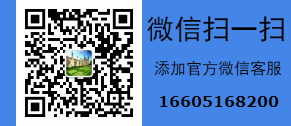裕兴新概念英语第一册视频全集百度云下载(附笔记和mp3音频)
更新时间:2020-06-07 08:05点击:





裕兴新概念英语第一册视频全集百度云下载(附笔记和mp3音频)
下载地址
https://share.weiyun.com/5xoYrq4
10倍速抗遗忘轻松记单词下载
https://pan.baidu.com/s/1A5qOEhDKxgq
资料目录
(责任编辑:谷雨英语单词速记网)
下载地址
https://share.weiyun.com/5xoYrq4
10倍速抗遗忘轻松记单词下载
https://pan.baidu.com/s/1A5qOEhDKxgq
资料目录
裕兴新概念英语第一册视频1-50
裕兴新概念英语第一册视频51-94
裕兴新概念英语第一册笔记(WORD完整版)
裕兴新概念英语第一册1-144课MP3
举例
Lesson 43
--of course 当然
--certainly / surely (Am.)
--kettle n. 水壶
--behind prep. 在… 的后面
--A pretty girl is sitting behind me(me 做behind 的宾语). 一个漂亮的女孩坐在我的后面。
--behind-------------after
--behind 是指方位的前后 在….的后面
--Put the clothes tree behind the door. 把衣架放在门后。
--after 是指时间或顺序的先后,在…之后
--She came after me. 她在我之后来的。
--in front of 指方位的前后,是behind 的反义词,表示在… 之前.
--There is a tree in front of the house.在房前面有一棵树。
--before指时间或顺序的先后,是after的反义词,表示在…之前。
--You must come here before six o’clock. 你必须在六点钟之前来到这里。
--teapot n. 茶壶
--now adv. 现在,此刻(现在进行时)
--They are doing their homework now.他们正在做作业。
--Is he cooking a meal now. 他现在正在做饭吗?
--find v. 找到(结果)
--I can’t find my watch. 我找不到手表了。
--look for 找… (动作)
--What are you looking for? 你在找什么?
--I’m looking for my briefcase. 我正在找我的公文包。
--find out 查出(真相)
--We must find out the truth. 我们必须查出真相。
--boil v. 沸腾,开
--What are you doing? 你正在干什么?
--I am boiling the eggs. 我正在煮鸡蛋。
--boiling adj. 正在沸腾的
--the boiling water 正在烧开的水(沸腾的水)
--boiled adj. 煮过的
--the boiled water 己经烧开的水
情态动词
1) 情态动词虽然具有实际意义,但却不能单独作谓语;
2) 必须与后边的动词一起作谓语;
3) 无人称数的变化;
4) 在疑问否定中,情态动词本身起变化。
--must 必须
--He must shave today. 他今天必须刮胡子.
--Must we clean the room now? 我们必须现在打扫房间吗?
--Yes, you must. 是的你必须。
--No, you needn’t. 不,不必了。
(注:must 否定句式用needn’t,表示不必;如用mustn’t,则表示决不可以,绝对禁止做某事.)
--You mustn’t climb the tree.你决不可以爬树。
--can 表示能够,会
--I can swim. 我会游泳。
--He can help me. 他能帮我。
--They can speak Swedish. 他们会说瑞典语。
--can 还可表示允许,表示可以
--You can give it to me tomorrow. 你可以明在把它给我。
--You can use my pen.
疑问句把can 提前
--Can they speck Russian? 他们会说俄语吗?
--Yes, they can. 他们会说。
--No, they can’t. 不,他们不会。
--can’t 是cannot的缩写,cannot要连在一起写。
--Can I go now? 我现在可以走了吗?
--Yes, you can. 可以。
--No, you can’t. 不可以
否定句在can的后面加not,注意cannot 要合在一起写,缩写can’t.
--He cannot find his passport. 他找不到他的护照。
--They can’t swim.
特殊疑问句由what/who/where/when等引导。
--Who can do it? 谁能做?
--Where can I buy it? 在哪能买到它?
--When can we meet again? 我们何时再相见?
Question:
1) Do you think that Sam makes the tea very often? 你认为Sam 经常沏茶吗?
--Sam doesn’t make the tea very often. Sam 不经常沏茶。
2) Why?
--Sam cannot find the tea.
--Sam cannot find the cups.
--can 表示能够,会
疑问句把情态动词can提前。
--Yes, of course I can, Penny.
--of course
--certainly
--surely
--Yes, certainly I can.
--Yes, surely I can.
--Is there any water is this kettle?
--water 水(不可数名词)
--there is
--some water 一些水
--疑问句—any water
--Where is the tea? Tea 是不可数名词,我们要用is.
--It’s over there, behind the teapot.
--over there 较远的那边
--behind the teapot 在茶壶的后面(进一步解释over there)
--behind------in front of 在….的前面
--Can you see it? -can表示“能够” see 看见(结果)
--I can…, but a can’t…
我能够….但我不能… but是连词,表示转折。
I can ride a bicycle, but I can’t drive.
I can wash the dishes, but I can’t wash the clothes.
--There it is. 倒装句 Here it is .
--There are some in the cupboard. 在碗橱里有几只。
--some在此处是代词,代替the cups, 因此系动词要用are.
--some 作代词的例子还有:
--some of the students 学生当中的一些
--hurry up 赶快(在祈使语气中用来催促别人)
--The kettle’s boiling=The water in the kettle is boiling.
小结:
情态动词can表示“能够、会、可以”,后面加动词原形,没有人称和数格的变化。在疑问句和否定句中,can 本身起变化。
情态动词虽然具有实际意义,介却不能单独作谓语,必须与后边的动词一起作谓语;无人称数的变化;在疑问否定中,情态动词本身起变化。
--there is 跟可数名语单数、不可数名词
--there are 跟可数名词复数形式
--one/some/ones
--one 单数可数名词
--some 不可数名词、可数名词复数
--ones 可数名词复数
举例
Lesson 43
--of course 当然
--certainly / surely (Am.)
--kettle n. 水壶
--behind prep. 在… 的后面
--A pretty girl is sitting behind me(me 做behind 的宾语). 一个漂亮的女孩坐在我的后面。
--behind-------------after
--behind 是指方位的前后 在….的后面
--Put the clothes tree behind the door. 把衣架放在门后。
--after 是指时间或顺序的先后,在…之后
--She came after me. 她在我之后来的。
--in front of 指方位的前后,是behind 的反义词,表示在… 之前.
--There is a tree in front of the house.在房前面有一棵树。
--before指时间或顺序的先后,是after的反义词,表示在…之前。
--You must come here before six o’clock. 你必须在六点钟之前来到这里。
--teapot n. 茶壶
--now adv. 现在,此刻(现在进行时)
--They are doing their homework now.他们正在做作业。
--Is he cooking a meal now. 他现在正在做饭吗?
--find v. 找到(结果)
--I can’t find my watch. 我找不到手表了。
--look for 找… (动作)
--What are you looking for? 你在找什么?
--I’m looking for my briefcase. 我正在找我的公文包。
--find out 查出(真相)
--We must find out the truth. 我们必须查出真相。
--boil v. 沸腾,开
--What are you doing? 你正在干什么?
--I am boiling the eggs. 我正在煮鸡蛋。
--boiling adj. 正在沸腾的
--the boiling water 正在烧开的水(沸腾的水)
--boiled adj. 煮过的
--the boiled water 己经烧开的水
情态动词
1) 情态动词虽然具有实际意义,但却不能单独作谓语;
2) 必须与后边的动词一起作谓语;
3) 无人称数的变化;
4) 在疑问否定中,情态动词本身起变化。
--must 必须
--He must shave today. 他今天必须刮胡子.
--Must we clean the room now? 我们必须现在打扫房间吗?
--Yes, you must. 是的你必须。
--No, you needn’t. 不,不必了。
(注:must 否定句式用needn’t,表示不必;如用mustn’t,则表示决不可以,绝对禁止做某事.)
--You mustn’t climb the tree.你决不可以爬树。
--can 表示能够,会
--I can swim. 我会游泳。
--He can help me. 他能帮我。
--They can speak Swedish. 他们会说瑞典语。
--can 还可表示允许,表示可以
--You can give it to me tomorrow. 你可以明在把它给我。
--You can use my pen.
疑问句把can 提前
--Can they speck Russian? 他们会说俄语吗?
--Yes, they can. 他们会说。
--No, they can’t. 不,他们不会。
--can’t 是cannot的缩写,cannot要连在一起写。
--Can I go now? 我现在可以走了吗?
--Yes, you can. 可以。
--No, you can’t. 不可以
否定句在can的后面加not,注意cannot 要合在一起写,缩写can’t.
--He cannot find his passport. 他找不到他的护照。
--They can’t swim.
特殊疑问句由what/who/where/when等引导。
--Who can do it? 谁能做?
--Where can I buy it? 在哪能买到它?
--When can we meet again? 我们何时再相见?
Question:
1) Do you think that Sam makes the tea very often? 你认为Sam 经常沏茶吗?
--Sam doesn’t make the tea very often. Sam 不经常沏茶。
2) Why?
--Sam cannot find the tea.
--Sam cannot find the cups.
--can 表示能够,会
疑问句把情态动词can提前。
--Yes, of course I can, Penny.
--of course
--certainly
--surely
--Yes, certainly I can.
--Yes, surely I can.
--Is there any water is this kettle?
--water 水(不可数名词)
--there is
--some water 一些水
--疑问句—any water
--Where is the tea? Tea 是不可数名词,我们要用is.
--It’s over there, behind the teapot.
--over there 较远的那边
--behind the teapot 在茶壶的后面(进一步解释over there)
--behind------in front of 在….的前面
--Can you see it? -can表示“能够” see 看见(结果)
--I can…, but a can’t…
我能够….但我不能… but是连词,表示转折。
I can ride a bicycle, but I can’t drive.
I can wash the dishes, but I can’t wash the clothes.
--There it is. 倒装句 Here it is .
--There are some in the cupboard. 在碗橱里有几只。
--some在此处是代词,代替the cups, 因此系动词要用are.
--some 作代词的例子还有:
--some of the students 学生当中的一些
--hurry up 赶快(在祈使语气中用来催促别人)
--The kettle’s boiling=The water in the kettle is boiling.
小结:
情态动词can表示“能够、会、可以”,后面加动词原形,没有人称和数格的变化。在疑问句和否定句中,can 本身起变化。
情态动词虽然具有实际意义,介却不能单独作谓语,必须与后边的动词一起作谓语;无人称数的变化;在疑问否定中,情态动词本身起变化。
--there is 跟可数名语单数、不可数名词
--there are 跟可数名词复数形式
--one/some/ones
--one 单数可数名词
--some 不可数名词、可数名词复数
--ones 可数名词复数
相关文章




 QQ客服1:2151239526
QQ客服1:2151239526  | 苏ICP备06011263号|
| 苏ICP备06011263号| 
